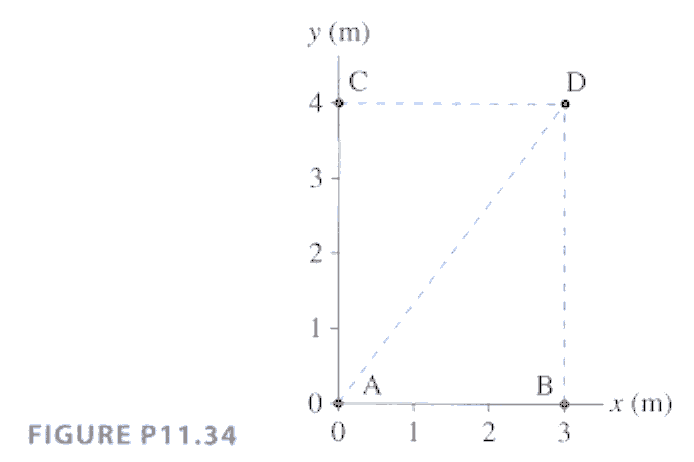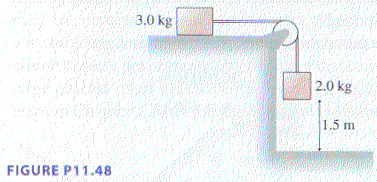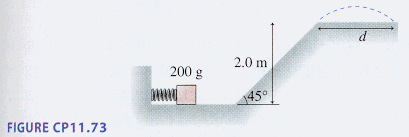CHAPTER 11
- (P.334 Prob.34) A particle moves from A to D in Figure P11.34 while
experiencing force F = (6i + 8j) N. How much work does
the force do if the particle follows path (a) ABD, (b) ACD, and (c) AD? Is
this a conservative force? Explain.

- (P.335 Prob.42) Sam, whose mass is 75 kg, strap on his skis and starts
down a 50-m-high, 20° frictionless slope. A strong headwind exerts a
horizontal force of 200 N on his as he skies. Find Sam's speed
at the bottom (a) using work and energy, (b) using Newton's laws.
- (P.335 Prob.48) Use work and energy to find the speed of the 2.0-kg block
just before it hits the floor if (a) the table is frictionless and if (b)
the coefficient of kinetic friction of the 3.0-kg block is 0.15.

- (P.336 Prob.60) A gardener pushes a 12-kg lawnmower whose handle is
tilted up 37° above horizontal. The lawnmower's coefficient of rolling
friction is 0.15. How much power does the gardener have to supply at a
constant speed of 1.2 m/s?
- (P.337 Prob.73) Challenge Problem. The spring in Figure
CP11.73 has a spring constant of 1000 N/m. It is compressed 15 cm, then
launches a 200 g block. The horizontal surface is frictionless, but the
block's coefficient of kinetic on the incline is 0.20. What distance d
does the block sail through the air?






